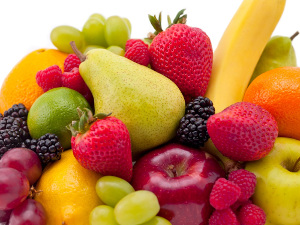Opinion: California produces stellar citrus crop against the odds

By California Citrus Mutual president Joel Nelsen
The multi-billion dollar California commodity called citrus is at the starting blocks eagerly awaiting the start of another season. Soon a massive number of trucks moving lemons, mandarins and navel oranges will occupy the highways and byways with a late October start anticipated for the 16/17 crop year.
This year’s crop estimate for navel oranges is down almost 15% from last year but last year was one of the largest crops in history. Those wonderful rains last fall and winter created greater opportunity for fruit growth and the larger the fruit the more cartons necessary to pack. This season it appears an "average" size crop is waiting to be picked.
Recent grove examinations indicate another flavorful crop. During the summer we all complained about the excessive number of days with 100°F. Well it helps with fruit flavor, so maturity for harvest should not be a problem.
Now we need some cool nights to begin making those green pieces of fruit bright orange nuggets. With normal rain the fruit size appears to be slightly smaller than last year. Who knows, Mother Nature may come through again.
Our mandarin crop also looks good, although the early varieties, satsumas and clementines may be off in terms of numbers. After the first of the year all things look normal. Flavor is not an issue!
Lemon numbers are solid and high demand promises some good revenue for producers. Shhh – we are also harvesting a few million more cartons of grapefruit.
This all sounds rosy, and the product is certainly that. But it is one of the most expensive crops to farm in the annals of our great industry. Government-imposed costs have exploded. In the past 10 years, according to the University of California, they have risen 88%.
Higher permits, more fees, additional regulatory burdens, and the hits just keep on coming. Nevertheless, the producing acreage today, while down a bit as growers transition to other varieties, remains very solid.
Throw in producer costs to protect the industry from Huanglongbing (HLB) and that’s another $15 million the industry assesses itself. Huanglongbing has destroyed 70% of the Florida industry, is ravaging the Texas industry, overwhelms the Mexican industry and fellow growers in Brazil have removed over 26 million trees since the first detection of that insidious disease.
This is not something to trifle with and a major effort is underway to do something no other citrus producing area has been able to accomplish - protect itself from this deadly disease. Our dollars are matched by a $12m augmentation from Congress and the United States Department of Agriculture (USDA).
Our program consists of intensive trapping in urban areas and groves. In rural areas where commercial operations exist the industry underwrites trapping and treatment programs in residential areas. We also have a program that truly looks for the needle in the haystack.
At the time of writing, 27 HLB-infected trees have been found in backyards in a major urban area. Once found those trees have all been removed in 48 hours or less. Mitigation steps are employed on growers and shippers in order to move fruit around the state as well. It adds costs but it protects the industry from suffering the same fate other growers are incurring.
By the way, all those costs I mentioned above did not include carryover of expensive water in anticipation of low allocations. Admittedly, growers received much more than zero which was the norm for the past two years but initial water utilized was very expensive.
So this crop was very expensive to produce and with fewer numbers one would hope we could get a bit more value at store level.
So against tremendous odds our 3,500 producers have managed to create a wonderful crop of citrus. It will be harvested by approximately 12,000 people; sent to around 70 packing houses who have another 8000 employees and an estimated 200 million packages of fruit will be loaded on thousands of trucks and containers for distribution.
The goal is to have fruit in the marketplace by Halloween, store shelves full by Thanksgiving and major marketing programs going by Christmas. By the time July 4th rolls around we should be done, a bit exhausted and hopefully profitable.
Well wait, cold weather for color is good. It also strengthens the rind. But we all know that five hours below 32°F hurts the mandarins and the lemons. Five hours below 28°F negatively impacts navel oranges. So we get a bit schizophrenic about now and hope for cold but not too cold! Most of us remember 1990 and 1998.
Starting blocks are down and runners are in their places. It’s just about time to go harvest California’s first permanent crop. California Citrus is on the way!












































